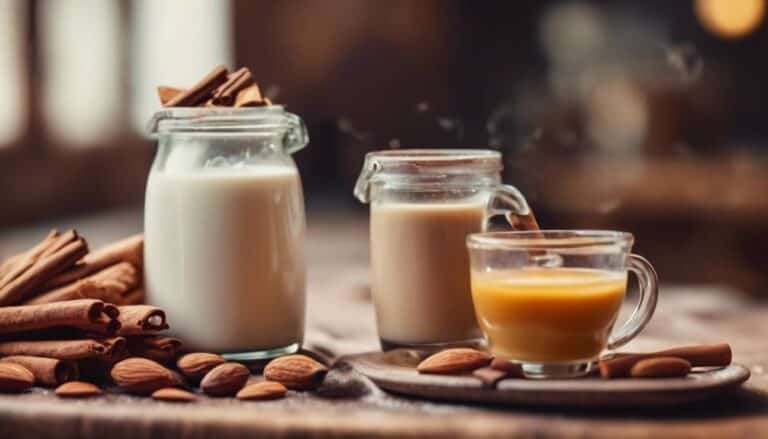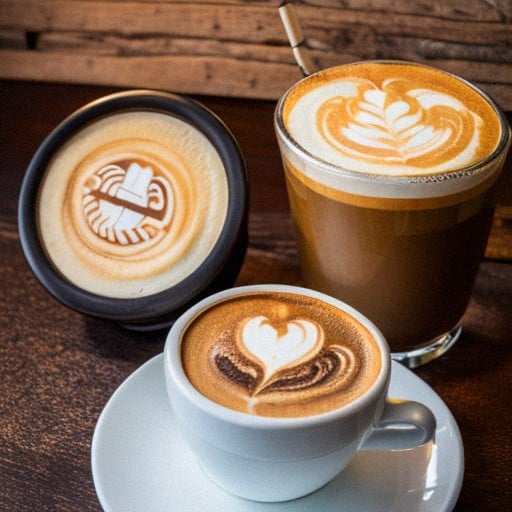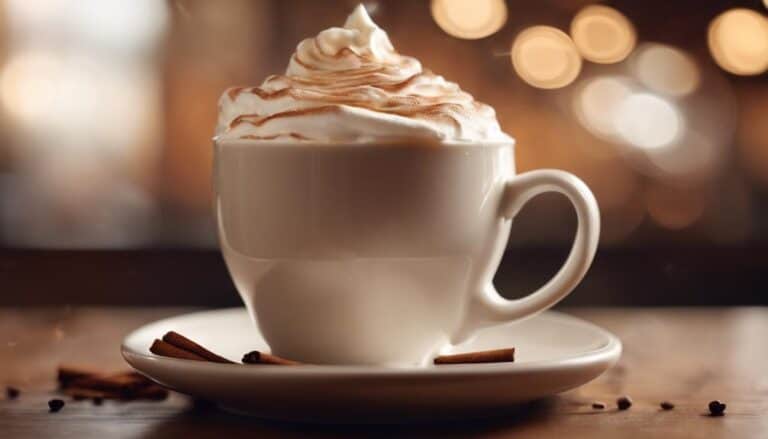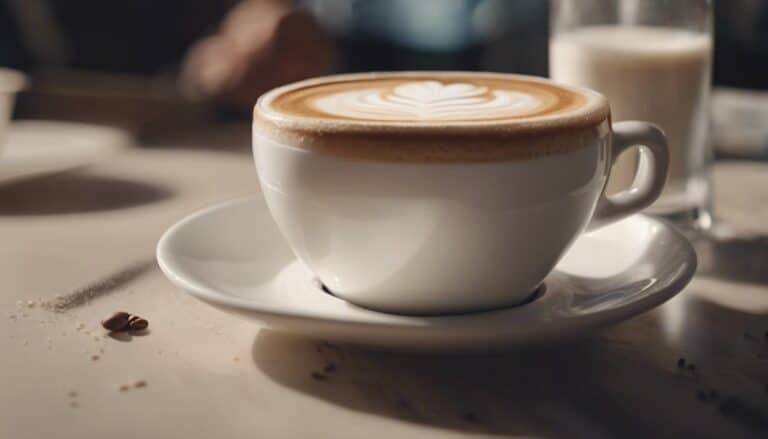Is Cappuccino Stronger Than Coffee? Exploring the Differences Between the Two Beverages
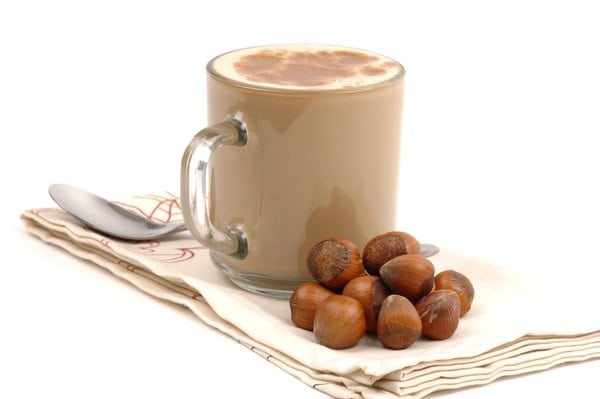
When it comes to coffee, there are numerous types and variations to choose from. One of the most popular coffee drinks is cappuccino, known for its creamy texture and rich flavor. But how does it compare to regular coffee? Is cappuccino stronger than coffee? In this article, we will explore the differences between cappuccino and coffee, including their caffeine content, taste, and nutritional value.
Understanding the difference between cappuccino and coffee is essential in determining which one is stronger. Cappuccino is a type of coffee drink made with espresso and steamed milk, while coffee is brewed with water and coffee grounds. Cappuccino is typically served in smaller portions and has a creamy texture due to the added milk. On the other hand, coffee is served in larger portions and has a stronger flavor because no milk is added.
Caffeine content and strength are also factors to consider when comparing cappuccino and coffee. While cappuccino contains less caffeine than an average cup of coffee, it still contains some amount of caffeine that cannot go unnoticed. The strength of the drink ultimately depends on the ratio of espresso to milk used, as well as the quality of the coffee beans. In the following sections, we will delve deeper into the making of cappuccino and coffee, as well as their nutritional facts and health benefits.
Key Takeaways
- Cappuccino is a type of coffee drink made with espresso and steamed milk, while coffee is brewed with water and coffee grounds.
- Cappuccino contains less caffeine than an average cup of coffee, but it still contains some amount of caffeine that cannot go unnoticed.
- The strength of the drink ultimately depends on the ratio of espresso to milk used, as well as the quality of the coffee beans.

Understanding Cappuccino and Coffee
When it comes to caffeine content, many people wonder whether cappuccino or coffee is stronger. To answer this question, we must first understand what cappuccino and coffee are.
Coffee
Coffee is a popular beverage made by brewing roasted, ground coffee beans with hot water. It is a staple in many cultures and is enjoyed in various forms, such as espresso, drip coffee, and French press.
Regular coffee typically has a higher caffeine content than cappuccino, depending on the type of coffee and how it is brewed. For example, an 8-ounce cup of brewed coffee contains around 95 milligrams of caffeine, while a shot of espresso contains around 63 milligrams.
Cappuccino
Cappuccino is a coffee drink that originated in Italy. It is made by combining espresso, steamed milk, and frothed milk. The name cappuccino comes from the Capuchin friars’ hoods, which the drink’s color resembles.
Cappuccino typically has less caffeine than a cup of regular coffee, owing to its espresso base. However, the taste and flavor might not necessarily be stronger, as the addition of milk can mellow out the boldness of the coffee.
The caffeine content of a cappuccino depends on various factors, such as the type of coffee used, the amount of espresso in the drink, and the size of the cup. A small cappuccino typically contains around 75 milligrams of caffeine, while a large cappuccino can contain up to 150 milligrams.
In summary, while cappuccino and coffee are both popular beverages, they differ in terms of caffeine content, taste, and preparation. Regular coffee typically has a higher caffeine content than cappuccino, while cappuccino is made by combining espresso, steamed milk, and frothed milk.
The Making of Cappuccino and Coffee
When it comes to the making of cappuccino and coffee, the main difference lies in their ingredients and preparation method. A traditional cappuccino is made up of espresso, steamed milk, and milk foam, while coffee usually consists of just hot water and roasted coffee beans.
To make a cappuccino, we first need to prepare a shot of espresso using an espresso machine. Then, we need to steam milk by heating it up with the steam wand of the espresso machine. The steamed milk is then poured into the espresso shot, followed by a layer of milk foam on top. The ratio of espresso, steamed milk, and foam can vary depending on personal preference and the size of the cup.
On the other hand, to make coffee, we need to start by choosing the right type of coffee beans and grinding them to the desired coarseness. The ground coffee is then placed in a filter or a French press, and hot water is poured over it to extract the flavor. The brewing time and method can also vary depending on personal preference and the brewing equipment used.
It’s worth noting that cappuccino is a type of latte, which means it also contains steamed milk. However, the difference between a latte and a cappuccino lies in the ratio of espresso to steamed milk and foam. A latte has more steamed milk and less foam, while a cappuccino has less steamed milk and more foam.
In summary, the making of cappuccino and coffee involves different ingredients and preparation methods. While cappuccino requires the use of an espresso machine and steamed milk, coffee can be made using various brewing methods and ground coffee beans.
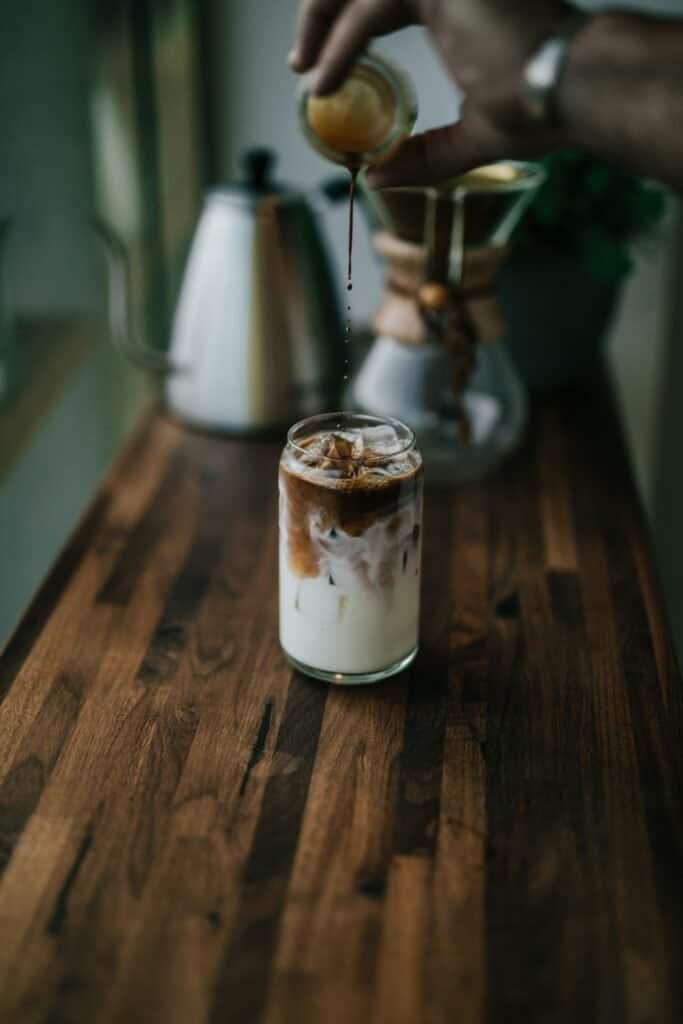
Caffeine Content and Strength
When it comes to caffeine content, cappuccino and coffee are quite different. A cappuccino typically contains more caffeine than a regular cup of coffee, owing to its espresso base. However, the taste and flavor might not necessarily be stronger, as the addition of milk can mellow out the boldness of the coffee.
The amount of caffeine in a cup of coffee can vary depending on the type of coffee beans used, the brewing method, and the serving size. On average, an 8-ounce cup of coffee contains about 95 milligrams of caffeine. In contrast, a single shot of espresso used in a cappuccino contains about 63 milligrams of caffeine.
It’s important to note that the strength of a drink ultimately depends on the ratio of espresso to milk used, as well as the quality of the coffee beans. Generally speaking, cappuccinos are made with a single shot of espresso and steamed milk, while coffee is typically brewed with grounds. As such, cappuccino is typically stronger than coffee.
For those who need a caffeine boost, a cappuccino might be a better choice. However, caffeine needs can vary from person to person, and it’s important to be mindful of how much caffeine you consume. Too much caffeine can cause jitters, anxiety, and insomnia. It’s recommended that adults consume no more than 400 milligrams of caffeine per day.
Taste and Texture
When it comes to taste and texture, cappuccino and coffee are quite different. Coffee has a strong flavor profile that can range from fruity and acidic to bold and smoky, depending on the beans and the roast level. On the other hand, cappuccino has a mild and creamy taste that is often sweet and smooth.
The texture of cappuccino is also quite different from coffee. Cappuccino is made with steamed milk, which gives it a creamy and frothy texture. This texture is one of the defining characteristics of cappuccino and is what sets it apart from other coffee drinks.
In contrast, coffee has a thinner and less creamy texture. This is because coffee is made by brewing coffee beans, which results in a thinner and less viscous liquid. While some people prefer the thicker and creamier texture of cappuccino, others prefer the thinner and less creamy texture of coffee.
Overall, the taste and texture of cappuccino and coffee are quite different. Cappuccino has a mild and creamy taste with a frothy texture, while coffee has a strong flavor profile with a thinner and less creamy texture.
Nutritional Facts and Health Benefits
When it comes to nutritional facts, cappuccino and coffee have a few differences. A standard 8 oz cup of coffee contains only 2 calories, no sugar, and no fat. On the other hand, a 6 oz cappuccino contains around 80 calories, 6 grams of sugar, and 4 grams of fat. However, these numbers may vary depending on the type of milk and sugar added to the cappuccino.
In terms of protein, both cappuccino and coffee contain very little. A cup of coffee contains only 0.3 grams of protein, while a cappuccino contains 3 grams. However, this amount is still relatively low compared to other protein sources.
When it comes to health benefits, both cappuccino and coffee have some similar advantages. They both contain caffeine, which can help improve mental alertness and concentration. Additionally, coffee has been linked to a reduced risk of type 2 diabetes, liver disease, and some types of cancer.
Cappuccino, on the other hand, contains milk, which is a good source of calcium. Calcium is essential for building and maintaining strong bones and teeth. Additionally, milk contains some sugars and fats that can provide energy to the body.
Both coffee and cappuccino also contain antioxidants, which can help protect the body against damage from free radicals. Free radicals are unstable molecules that can cause damage to cells and contribute to the development of chronic diseases such as cancer.
Overall, both cappuccino and coffee can be part of a healthy diet when consumed in moderation. However, it is important to keep in mind that adding sugar, cream, or other flavorings can significantly increase the calorie, sugar, and fat content of these drinks.
Variations in Coffee Drinks
As coffee lovers, we know that there are many different ways to enjoy our favorite drink. From cappuccinos to lattes, Americanos to macchiatos, and everything in between, there’s a coffee drink for every taste preference. In this section, we’ll explore some of the most popular coffee variations and the differences between them.
Cappuccinos
Cappuccinos are a classic Italian coffee drink made with espresso and steamed milk. They are typically served in a small cup with a thick layer of foam on top. Cappuccinos have a strong, rich flavor that is balanced by the sweetness of the milk. They are often enjoyed as a morning drink or as a dessert.
Lattes
Lattes are similar to cappuccinos but have more milk and less foam. They are made with espresso and steamed milk, and are often topped with a thin layer of foam. Lattes have a milder flavor than cappuccinos and are often enjoyed as an afternoon or evening drink.
Americanos
Americanos are a popular coffee drink in the United States. They are made by adding hot water to a shot of espresso, which creates a milder flavor than a traditional espresso shot. Americanos are often enjoyed as a morning drink or as a mid-day pick-me-up.
Macchiatos
Macchiatos are a small, strong coffee drink made with espresso and a small amount of steamed milk. They are typically served in a small cup with a thin layer of foam on top. Macchiatos have a rich, bold flavor and are often enjoyed as a mid-day or evening drink.
Instant Coffee
Instant coffee is a popular coffee drink that is made by adding hot water to a powdered coffee mix. It is a quick and easy way to enjoy a cup of coffee, but it has a weaker flavor than other coffee drinks. Instant coffee is often enjoyed as a morning drink or as a mid-day pick-me-up.
Black Coffee
Black coffee is a simple coffee drink made by brewing coffee grounds with hot water. It has a bold, strong flavor and is often enjoyed as a morning drink. Black coffee can be served hot or cold and can be enjoyed with or without milk and sugar.
Filter Coffee
Filter coffee is a popular coffee drink that is made by brewing coffee grounds with hot water using a filter. It has a milder flavor than other coffee drinks and is often enjoyed as a morning or mid-day drink. Filter coffee can be served hot or cold and can be enjoyed with or without milk and sugar.
Specialty Drinks
Specialty coffee drinks are a newer trend in the coffee world. They are often made with unique ingredients and have a more complex flavor profile than traditional coffee drinks. Some popular specialty coffee drinks include pumpkin spice lattes, caramel macchiatos, and peppermint mochas.
In conclusion, there are many different variations of coffee drinks to choose from. Each drink has its own unique flavor profile and is enjoyed at different times of the day. Whether you prefer a strong, bold flavor or a milder, sweeter taste, there is a coffee drink for everyone.
Additives and Sweeteners
When it comes to adding sweeteners and additives to our coffee or cappuccino, there are a variety of options available. Some people prefer to enjoy their coffee or cappuccino black, while others like to add a little something extra to enhance the flavor. Here are some common additives and sweeteners that you may want to consider:
Sugar
Sugar is a common sweetener that is often added to coffee or cappuccino. It can be added in various forms, such as granulated sugar, brown sugar, or raw sugar. While sugar can make your coffee or cappuccino taste sweeter, it’s important to remember that it can also add calories to your drink.
Sweet Syrups
Sweet syrups, such as vanilla, hazelnut, or caramel, can be added to coffee or cappuccino to give it a unique flavor. These syrups are often made with sugar, so it’s important to remember that they can add calories to your drink.
Cinnamon
Cinnamon is a spice that can be added to coffee or cappuccino to give it a warm, spicy flavor. Cinnamon is a natural sweetener, so it can be a great alternative to sugar or sweet syrups.
Chocolate or Cocoa
Chocolate or cocoa can be added to coffee or cappuccino to give it a rich, chocolatey flavor. This is a great option for those who enjoy mochas or other chocolate-flavored drinks.
Sweeteners
There are a variety of sweeteners available that can be used as an alternative to sugar. Some popular options include stevia, honey, and agave nectar. These sweeteners are often lower in calories than sugar, making them a great option for those who are watching their calorie intake.
When it comes to adding additives and sweeteners to your coffee or cappuccino, it’s important to remember that they can add calories and affect the overall taste of your drink. It’s always a good idea to experiment with different flavors and find the combination that works best for you.
Personal Preferences and Considerations
When it comes to choosing between cappuccino and coffee, personal preference plays a significant role. Some people prefer the rich flavor of coffee, while others enjoy the creamy texture of cappuccino. It is essential to consider your taste preferences and the occasion when deciding which drink to order.
One factor to consider is the size of the drink. Cappuccinos are typically smaller than coffee, which means that they contain less caffeine. If you need a strong caffeine boost, coffee might be a better option. However, if you prefer a smaller, more concentrated drink, cappuccino might be the way to go.
Another consideration is the type of milk used in the drink. Some people prefer whole milk, while others prefer almond or oat milk. It is essential to consider any dietary restrictions or preferences when choosing the type of milk. Additionally, the type of milk used can affect the taste and texture of the drink.
Double shots are another consideration when it comes to strength. If you prefer a stronger drink, you can ask for a double shot of espresso in your cappuccino or coffee. However, keep in mind that this will increase the caffeine content of the drink.
Food pairings can also affect your choice. If you are having a sweet pastry or dessert, a cappuccino might be a better option as it can balance out the sweetness. On the other hand, if you are having a savory breakfast or lunch, coffee might be a better option.
Finally, style and presentation can also play a role in your decision. Cappuccinos are often served in a smaller cup with a decorative foam design, while coffee is typically served in a larger mug. If you are looking for a more elegant or sophisticated drink, cappuccino might be the way to go.
Overall, when it comes to choosing between cappuccino and coffee, personal preference is key. Consider the size, type of milk, double shots, food pairings, and presentation when making your decision.
Roasting and Grinding Process
When it comes to coffee, the roasting and grinding process plays a crucial role in determining the strength and flavor of the final product.
During the roasting process, coffee beans are heated to high temperatures, causing them to expand and crack. The longer the beans are roasted, the darker they become, and the more intense the flavor. Dark roast coffee beans are known for their bold and smoky flavor, while lighter roasts tend to be more acidic and fruity.
In addition to affecting the flavor, the roast level of coffee beans can also impact their caffeine content. Contrary to popular belief, darker roasts do not necessarily contain more caffeine than lighter roasts. While caffeine is present in all coffee beans, it is actually destroyed as the beans are roasted for longer periods of time. As a result, lighter roasts may actually contain slightly more caffeine than darker roasts.
Once the coffee beans have been roasted, they are ground into a fine powder. The size of the grind can also impact the strength of the final product. Finely ground coffee beans, like those used in espresso, produce a stronger and more concentrated flavor than coarsely ground beans used in drip coffee.
Overall, the roasting and grinding process can greatly impact the strength and flavor of coffee. While darker roasts may have a more intense flavor, they may not necessarily contain more caffeine than lighter roasts. Additionally, the size of the grind can also impact the strength of the final product.
